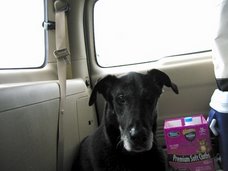 You’re visiting the City for the first time and you may not get back for years. You want to see (and show your kids) as much as possible, but where do you begin? Lower your expectations and increase flexability with smart planning.
You’re visiting the City for the first time and you may not get back for years. You want to see (and show your kids) as much as possible, but where do you begin? Lower your expectations and increase flexability with smart planning.It always seems like a great idea to plan lots of stimulating things for kids to see in the big city. After all how often do you get to visit New York City (or Washington DC, or Chicago, or Boston…)?
Considering that kids are equally amused by a revolving door as a $120 Broadway show, it’s usually worth scaling back your expectations and focusing on a few really cool things. Keep your daily itinerary realistic. Just like Christmas, if you keep giving kids more and more presents, each previous one loses its luster. Make a list of the things you really want to do and then cross out half of them. Stick with cool things that they can explore, and let them dictate the pace. Within reason.
But cutting the itinerary in half is just one way to boost your chances of a successful city visit. There are a few other factors that can make or break the experience: pick the right hotel, don't get caught waiting for food, let them play hard, but give them a chance to rest (even if your kids “don’t nap”).
Your hotel room can be your happy placeWe like suites so that there is at least one private bedroom and a kitchenette. They also often have two bathrooms. As we say frequently on this blog, we like
Residence Inns because they’re very kid friendly, they allow dogs, and there is a good (at least good enough) breakfast buffet each morning (some even have espresso machines). And there are also the Marriott Rewards points that Dan racks up during business trips.

 Eat breakfast in the room, pack some snacks, and don't sweat lunch
Eat breakfast in the room, pack some snacks, and don't sweat lunchFinding a place for lunch can often take a lot of time and energy, so have snacks on hand to take the edge off. If there is a breakfast buffet at the hotel room, grab an apple or two and a couple of mini boxes of cereal.
In New York and many other cities there are enough street vendors to make lunch easy. You can also get a deli recommendation from the hotel and buy some sandwiches before you head out. Also if the museum has a cafeteria, convenience may trump cuisine. That being said, there are also a lot of great places to eat, just have things planned so that you’re in the neighborhood (and stocked with snacks) before the lunch bell rings.
Make time for playing
Find a playground for a lunchtime picnic or a post lunch play session. Kids love to run, climb and blow off steam even more than they love visiting museums. Hard to believe, but true. Not only will the kids get to play hard, but the parents get to rest and people-watch. Central Park in New York City and The National Mall in DC are great for this.
Take a break before dinnerBecause the lines are shortest at museums and such, it often behooves you to get started early. As mentioned above, a quick breakfast in the hotel room or the lobby is a good strategy. But after an early start, an exciting museum, and playtime after lunch, the kids and parents are bound to be a bit tired. Do yourselves a favor: head to the hotel around 4:00 and kick back for a little while. Let the kids watch TV while you visit the cocktail lounge, take a shower, nap, read a book... whatever it takes to re-charge a little bit. Dinner will be a much better experience because of it. And depending on the age of the kids, you may even be able to sneak in an evening adventure (such as a ferry ride past the Statue of Liberty) after dinner without fear of an exhaustion crash.
Are we missing anything? Leave a comment and let us know!














